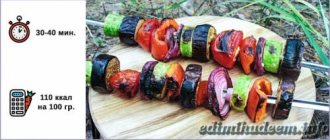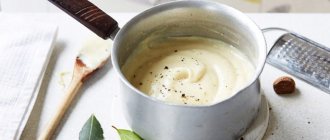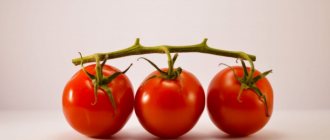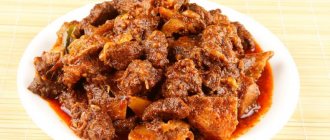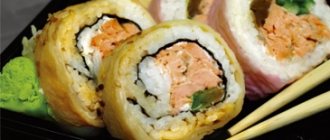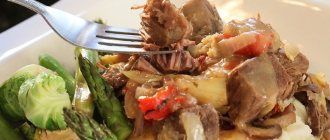May 21, 2014
Seal
- #cooking tricks
- #vegetables
It’s not how many recipes you know, but how you understand and know the entire basic process of cooking that makes you an excellent cook.
Culinary skill lies in knowing small but very important rules, procedures and techniques. After all, two chefs can prepare a dish according to the same recipe, only for one it will look great and taste perfect, but for the second it will be so-so... or maybe everything will be tragic. It’s unlikely that the recipe is to blame... You need experience and knowledge. Then you will not need to remember all these recipes, since you will create them yourself with your “wings spread.”
Knowing the basic methods of heat treatment of vegetables and their nuances, you can easily successfully create your own vegetable dishes.
Steaming vegetables:
The most “vitamin-rich” way to cook vegetables is to steam them. Please note that steaming vegetables always takes longer than cooking them in water. But vegetables cooked using this method are much juicier and, sometimes, brighter in color.
- It is best to steam relatively tender vegetables such as asparagus, green beans, new potatoes, new carrots, broccoli, cauliflower.
— For steaming, cut the vegetables into equal pieces, small in size. Cook until the vegetables are done.
-Vegetables should be placed in a steamer in one layer, then they will be cooked evenly.
— Along with the vegetables, in the steamer basket, you can put aromatic herbs, this will add an additional touch of flavor.
-You can steam not only with water, but also with broth, wine, etc. You just have to admit that steam penetrates very poorly into the depths of the vegetable and the additional aroma of the liquid from which the steam comes almost does not “settle” on the vegetables. It’s better to make a flavorful dressing for ready-made vegetables.
Remember that you need to open the lid of the steamer or pan from yourself.
All these vegetables need to serve is an interesting dressing.
Blanching vegetables:
A classic cooking method that plays an important role in every professional kitchen. This is, literally, a very short scalding of vegetables in a large amount of boiling water, after which a sharp cooling occurs in an ice bath or under cold running water.
This method makes blanched vegetables brighter and tastier than just raw ones. Sudden cooling interrupts heat treatment and vegetables remain crispy longer.
— Blanching often serves as a preliminary stage in preparing vegetables for salads, soups, stews, risotto, or simply for serving vegetables with some kind of dressing.
— For blanching, vegetables must be cut into equal pieces.
— Each type of vegetable must be blanched separately. This will prevent flavors and colors from mixing.
— To blanch vegetables, bring plenty of water, in a large saucepan, to a boil. Add a generous amount of salt (salt gently slows down the “leakage” of juices and vitamins from vegetables into the water, and speeds up cooking a little. In addition, the vegetables still have time to salt evenly). Add vegetables, if necessary, in portions so that there is no sudden change in water temperature. Bring the water back to a boil as quickly as possible.
-Blanching time depends on the texture and size of the vegetable and, of course, your personal preference. From 45 seconds to 2-3 minutes.
- Remove the vegetables with a slotted spoon or place in a sieve and immediately place for a few seconds either in an ice bath or under cold running water.
— Vegetables should not cool completely, you should only interrupt the heat treatment process.
Boiling vegetables:
The most common method of cooking vegetables in canteens :-) Perhaps the fastest and least interesting method of heat treatment. Vegetables can be cooked peeled or peeled.
— We begin to cook root vegetables in cold water, add all the rest to boiling water.
-You can cook vegetables not only in water, but also in broth, milk and other aromatic liquids.
— Unlike steaming vegetables, with this method, vegetables very strongly absorb the aroma and taste of the liquid in which they are boiled. Feel free to add your favorite spices and experiment with the boiling liquid.
— I repeat once again, it’s best to salt vegetables in the middle of the cooking process, this slightly slows down the “leakage” of juices and vitamins from vegetables into the water, and speeds up cooking a little. In addition, the vegetables will still have time to salt evenly.
Stewing vegetables:
An old method of heat treatment that produces tender vegetables with many shades of flavor. In addition, a very convenient method, since you can use the remains of all the vegetables in the refrigerator :-)
— For stewing, vegetables should be cut into equal pieces, small in size.
— First, vegetables are often fried in a small amount of oil, then a stewing liquid (broth, milk, sometimes even wine) is added.
- It must be remembered that acids slow down the cooking process, so acidic vegetables (like tomatoes), wine and other acidic ingredients should be added at the end of the stew.
Roasting vegetables:
My favorite method of heat treatment, the aroma of vegetables is enhanced, concentrated and an appetizing, beloved crust appears.
— The ideal temperature in the oven for baking vegetables is 200-220 ˚С. Produces the most luxurious crust, flesh and flavor.
— Vegetables should be cut into equal pieces.
-Before baking, you need to evenly grease the vegetables with oil. The moisture will evaporate more slowly, the crust will be more uniform and crispier, and the flesh will be even more tender.
— The oven must be preheated. The thermal process must begin at an initially high temperature.
— Vegetables need to be distributed evenly on the baking sheet, in one layer, then they will bake well and not stew.
— Vegetables can be baked on their own, several vegetables together, stuffed or in the form of casseroles. The rules do not change significantly for each type of baking.
- You should always take into account the baking time and texture of vegetables when roasting them together. So potatoes will bake faster than beets, and zucchini, for example, faster than potatoes.
-Turn the vegetables from time to time.
Frying vegetables:
A method of heat treatment that produces the least healthy but very tasty result. Plus, everything happens pretty quickly.
— Vegetables should be cut into equal pieces.
-After washing and cutting, vegetables should be dried with a paper towel to absorb excess moisture.
- Before adding vegetables to the pan, the pan and oil must be well heated. If you put vegetables in a cold frying pan, forget about the golden brown crust; in addition, the vegetable will absorb the oil faster.
- Some fibrous vegetables and vegetables with a very dense texture, like green beans, carrots, etc., are best blanched first and only then fried.
Grilling vegetables:
A quick and uneven method of cooking, especially relevant this season. A great way to enjoy the beautiful weather and not get too tired from preparing a meal.
— Vegetables should not be too dense and should cook relatively quickly. Zucchini, eggplant, tomato, onion, and sweet pepper are most suitable. Potatoes can be wrapped in foil and baked directly over coals, or lightly boiled and baked on a grill or skewer until cooked.
— Vegetables should be cut into equal pieces.
— Before baking, vegetables need to be greased with a small amount of oil. For the same reasons as for baking. (See above)
-Turn the vegetables regularly and monitor the heat temperature. Vegetables tend to char quickly.
Why does the calorie content of vegetables change after cooking?
The starchy group of vegetables contains large amounts of starch. During heat treatment, starch releases sugar.
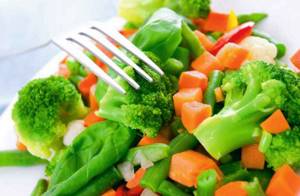
Sugar breaks down into sucrose, which produces glucose and fructose. Due to this, empty calories that have no nutritional elements increase. If, when cooking, the fruits are immersed in boiling water, the cooking temperature is reduced and water is periodically added to the cooking container, more nutrients can be retained in the product. But carrots, despite the increase in calorie content, are better eaten boiled, as beta-carotene is better absorbed.
If the fruits are not cooked until fully cooked, the calorie content will increase slightly. Beneficial microelements and vitamins will also be preserved. The condition of the products must be intact and not fall apart.
In the case of the starchy group, heat treatment cannot be avoided. The cooked dish will have the best taste. For those losing weight, with proper preparation and combination with other products, no problems will arise; consuming the product will not lead to weight gain. Therefore, you should not pay attention to the increase in energy value.
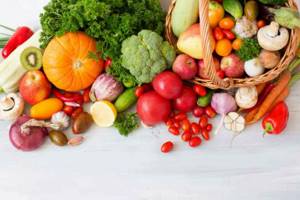
It is worth remembering that vegetables must be included in the diet. Raw fruits contain many useful substances and vitamins, so you need to eat both raw and cooked vegetables.
For cooking, it is necessary to choose the optimal method of heat treatment with a low temperature, which will minimize the increase in calorie content and preserve useful microelements.
Apples
A fresh, crisp apple is one of the healthiest fruits in our region. But not everyone knows that a baked apple is even healthier than a raw one. Both baked and raw apples contain potassium, manganese, iron, vitamins E, P, B2, B1, and C. During heat treatment, however, these beneficial substances are partially destroyed, but some still remain in the apple.
The benefit of baked apples is pectin. This substance is a powerful antioxidant, like lycopene from tomatoes. It protects cells from aging, fights the formation of cancer cells, and helps remove harmful substances from the body. The pectin content increases during heat treatment. That’s why it’s so important to bake, stew, and dry apples. And not just crunch raw.
Carrot
Carrots contain beta-carotene. This is the substance from which vitamin A is synthesized in our body. In addition, carotenes are antioxidants, they protect us from aging, slow down cell oxidation, and the accumulation of toxins. Vitamin A has a beneficial effect on vision. Products with carotene are recommended for people who have experienced radiation exposure (by the way, we often experience this exposure, for example, while flying on an airplane, so carrots are good for everyone). So the body gets beta-carotene from boiled or stewed carrots.
In addition, carrots contain lycopene, although in smaller quantities than tomatoes. But it also benefits and is better absorbed after heat treatment of the product.
Boiling
This method is not considered the best for preserving antioxidants in vegetables. Prolonged boiling over low heat can deprive vegetables of not only nutrients, but also taste. It is better to cook them quickly and over high heat.
Onions, eggplants and artichokes tolerate boiling best. And boiling asparagus even increases its antioxidant content. More “trivial” vegetables, such as carrots, spinach, various types of cabbage, leeks and green beans, lose from 30 to 50 percent of their antioxidant substances when cooked.
The worst crops in boiling water are green peas, cauliflower and zucchini. But these vegetables can also be eaten raw, including them in a variety of salads.
What are the benefits of heat treatment?
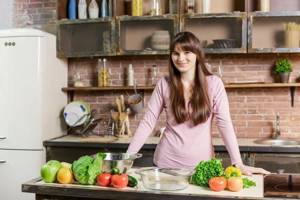
Fresh berries, vegetables and fruits bring many benefits to the body. They enrich it with vitamins, antioxidants, minerals and fiber. Therefore, nutritionists advise eating at least 3-5 servings of fresh fruits every day.
But some products, the quantity of which is very limited, only benefit from heat treatment, becoming even more nutritious. High temperatures activate the action of beneficial substances in their composition. The activity of vitamins in broccoli, carrots and zucchini increases almost 2 times, scientists say.
Remember these foods and try to eat them more in cooked form!
On a note!
Heat processing of food can destroy water-soluble vitamins - C, P and group B, as well as minerals - calcium, magnesium, iron and phosphorus. Their concentration can decrease by as much as 70%. But a lot depends on the food itself, as well as the method of processing it. Baking and grilling are always preferable to boiling and stewing.
Cabbage
It benefits, firstly, from fermentation. During the work of lactic acids, probiotics appear in cabbage - substances that have a positive effect on the microflora of the intestines and stomach, improving digestion and metabolism, helping to absorb all useful substances, in addition, the content of vitamin C in sauerkraut increases.
Secondly, during moderate heat treatment, stewing, baking at a temperature not exceeding 100 degrees, the content of ascorbic acid in cabbage also increases, since ascorbigen is transformed into vitamin C.
Processes that occur during heat treatment of vegetables
When vegetables are cooked, profound physical and chemical changes occur. Some of them play a positive role (softening vegetables, gelatinization of starch, etc.), improve the appearance of dishes (formation of a golden brown crust when frying potatoes); other processes reduce nutritional value (loss of vitamins, minerals, etc.), cause color changes, etc. The culinary specialist must be able to manage the processes taking place.
Softening of vegetables during heat treatment. Parenchyma tissue consists of cells covered with cell membranes. Individual cells are connected to each other by median plates. Cell walls and medial plates give vegetables mechanical strength. The composition of cell walls includes: fiber (cellulose), semi-fiber (hemicellulose), protopectin, pectin and connective tissue protein extensin. In this case, protopectin predominates in the middle plates.
During heat treatment, fiber remains virtually unchanged. Hemicellulose fibers swell but remain intact. The softening of the tissue is due to the breakdown of protopectin and extensin.
Protopectin, a polymer of pectin, has a complex branched structure. The main chains of its molecules consist of residues of galacturonic and polygalacturonic acids and the sugar rhamnose. The chains of galacturonic acids are connected to each other using various bonds (hydrogen, ether, anhydride, salt bridges), among which salt bridges of divalent calcium and magnesium ions predominate. When heated, an ion exchange reaction occurs in the middle plates: calcium and magnesium ions are replaced by monovalent sodium and potassium ions.
... GK - GK - GK ... ... GK - GK - GK ...
COO COONa
Ca+2Na+(K) +Ca++
COO COONa
... GK - GK - GK ... ... GK - GK - GK ...
In this case, the connection between the individual chains of galacturonic acids is destroyed. Protopectin breaks down, water-soluble pectin is formed, and the vegetable tissue softens. This reaction is reversible. In order for it to pass to the right, it is necessary to remove calcium ions from the reaction sphere. Plant products contain phytin and a number of other substances that bind calcium. However, the binding of calcium (magnesium) ions does not occur in an acidic environment, so the softening of vegetables slows down. In hard water containing calcium and magnesium ions, this process will also take place slowly. As the temperature rises, the softening of vegetables accelerates.
In different vegetables, the rate of protopectin breakdown is not the same. Therefore, you can boil all vegetables, and fry only those in which protopectin has time to turn into pectin before all the moisture has evaporated (potatoes, zucchini, tomatoes, pumpkin). In carrots, turnips, rutabaga and some other vegetables, protopectin is so stable that they begin to burn before they reach culinary readiness.
The softening of vegetables is associated not only with the breakdown of protopectin, but also with the hydrolysis of extensin. Its content decreases significantly when vegetables are cooked. Thus, upon reaching culinary readiness, about 70% of the extensin in beets breaks down, and about 40% in parsley.
Change in starch. During heat treatment of potatoes, starch grains (Fig. III.9) located inside the cells are gelatinized due to cell sap. In this case, the cells are not destroyed and the paste remains inside them. In hot potatoes, the connection between individual cells is weakened due to the breakdown of protopectin and extensin, so when rubbed they are easily separated from each other, the cells remain intact, the paste does not leak out, and the puree turns out fluffy.
When cooled, the connection between the cells is partially restored, they are separated from each other with great difficulty, their shells tear when rubbed, the paste flows out, and the puree turns out sticky.
When frying potatoes and other starchy vegetables, the surface of the cut pieces quickly dehydrates, the temperature in it rises above 120°C, and the starch
Rice. III.9. Starch grains in potatoes:
1 - cheese; 2 - boiled; 3 - when rubbed after cooling, it splits with the formation of pyrodextrins, which are brown in color, and the product becomes covered with a golden brown crust.
Change in sugars. When cooking vegetables (carrots, beets, etc.), part of the sugars (- and monosaccharides) goes into the broth. When frying vegetables, baking onions, carrots for broths, caramelization of the sugars contained in them occurs. As a result of caramelization, the amount of sugar in vegetables decreases, and a golden brown crust appears on the surface. The reaction of melanoidin formation, accompanied by the appearance of dark-colored compounds - melanoidins, also plays an important role in the formation of a crispy crust on vegetables.
Change in color of vegetables during heat treatment. The different colors of vegetables are caused by pigments (coloring substances). When cooked, the color of many vegetables changes.
The color of beets is determined by pigments - betanins (red pigments) and betaxanthins (yellow pigments). The color shades of root vegetables depend on the content and ratio of these pigments. Yellow pigments are almost completely destroyed when beets are cooked, and red pigments partially (12-13%) pass into the decoction and are partially hydrolyzed. In total, about 50% of betanins are destroyed during cooking, as a result of which the color of root vegetables becomes less intense.
The degree of change in beet color depends on a number of factors: heating temperature, betanin concentration, pH of the medium, contact with atmospheric oxygen, the presence of metal ions in the cooking medium, etc. The higher the heating temperature, the faster the red pigment is destroyed. The higher the concentration of betanin, the better it is preserved. Therefore, it is recommended to boil beets in their peels or stew them with a small amount of liquid. In an acidic environment, betanin is more stable, so vinegar is added when cooking or stewing beets.
Vegetables with a white color (potatoes, white cabbage, onions, etc.) acquire a yellowish tint when cooked. This is explained by the fact that they contain phenolic compounds - flavonoids, which form glycosides with sugars. During heat treatment, glycosides are hydrolyzed to release an aglycone, which is yellow in color.
The orange and red color of vegetables is due to the presence of carotenoid pigments: carotenes - in carrots, radishes; lycopenes - in tomatoes; violaxanthin - in pumpkin. Carotenoids are stable during heat treatment. They are insoluble in water, but highly soluble in fats; this is the basis for the process of extracting them with fat when sautéing carrots and tomatoes.
The pigment chlorophyll gives vegetables their green color. It is found in chloroplasts enclosed in the cytoplasm. During heat treatment, cytoplasmic proteins coagulate, chloroplasts are released and the acids of the cell sap interact with chlorophyll. As a result, pheophytin is formed - a brown substance.
To preserve the green color of vegetables, a number of rules should be followed:
- boil them in a large amount of water to reduce the concentration of acids;
- do not cover the container with a lid to facilitate the removal of volatile acids with steam;
- reduce the cooking time of vegetables by immersing them in boiling liquid and not overcooking them.
In the presence of copper ions in the cooking medium, chlorophyll acquires a bright green color; iron ions - brown; tin and aluminum ions - gray.
When heated in an alkaline environment, chlorophyll saponifies to form chlorophyllin, a bright green substance. The production of green dye is based on this property of chlorophyll: any greens (tops, parsley, etc.) are crushed, boiled with the addition of baking soda, and the chlorophyllin paste is squeezed through a cloth.
Changes in vitamin activity in vegetables. During heat treatment, vitamins undergo significant changes.
Vitamin C. Vegetables are the main source of vitamin C in human nutrition. It is highly soluble in water and very unstable when heat treated. Contained in vegetable cells in three forms: reduced (ascorbic acid), oxidized (dehydroascorbic acid) and bound (ascorbigen). Reduced and oxidized forms of vitamin C can easily transform into one another under the action of enzymes (ascorbinase - into the oxidized form, ascorbine reductase - into the reduced form). Dehydroascorbic acid is not inferior in biological value to ascorbic acid, but is much more easily destroyed during heat treatment. Therefore, during culinary processing, they try to inactivate ascorbinase, in particular, by immersing vegetables in boiling water.
Oxidation of vitamin C occurs in the presence of oxygen. The intensity of the process depends on the heating temperature of the vegetables and the duration of heat treatment. To reduce contact with oxygen, vegetables are cooked with the lid closed (except for green-colored vegetables); the volume of the container must correspond to the weight of the vegetables being boiled; in case of boiling, do not add cold, unboiled water. The faster vegetables are heated during cooking, the less ascorbic acid is destroyed. So, when potatoes are immersed in cold water (during cooking), 35% of vitamin C is destroyed, while in hot water only 7%. The longer the heating, the higher the degree of oxidation of vitamin C. Therefore, overcooking of food, long-term storage of food is not allowed, and reheating of ready-made dishes is undesirable.
Metal ions entering the cooking medium with tap water and from the walls of the cookware are catalysts for the oxidation of vitamin C. Copper ions have the greatest catalytic effect. In an acidic environment, this effect is less pronounced, so you should not add soda to speed up the cooking of vegetables.
Some substances contained in food products pass into the decoction and have a stabilizing effect on vitamin C. These substances include proteins, amino acids, starch, vitamins A, E, B, pigments - flavones, anthocyanins, carotenoids. For example, when boiling potatoes in water, the loss of vitamin C is about 30%, and when cooking in meat broth, vitamin C is almost completely preserved.
The greater the total amount of ascorbic acid in the product, the better the C-vitamin activity is preserved. This explains the fact that vitamin C in potatoes and cabbage is preserved better during the cooking process in the fall than in the spring. For example, when cooking unpeeled potatoes in the fall, the degree of destruction of vitamin C does not exceed 10%, in the spring it reaches 25%.
During cooking, ascorbic acid is not only destroyed, but also partially turns into a decoction. Therefore, vegetable decoctions are recommended for use in the preparation of soups and sauces. To reduce the loss of vitamin C from foods, it is advisable not to rinse sauerkraut, avoid long-term storage of peeled vegetables in water, etc.
When frying vegetables, there is less loss of vitamin C, since the layer of fat on the surface of the product reduces contact with air oxygen.
Large losses of vitamin C occur when products are subjected to repeated heat, pureed, beaten (in the manufacture of vegetable cutlets, casseroles, soufflés). So, in ready-made potato cutlets, only 5-7% of the amount of ascorbic acid in raw potatoes remains.
B vitamins. When cooked, they partially turn into a decoction and are partially destroyed. Vitamin B6 is the least resistant to heat. When cooking spinach, about 40% of it is destroyed, potatoes - 27-28%.
About 20% of thiamine and riboflavin are destroyed when vegetables are cooked, approximately 40% of the remainder goes into the decoction.
The more water for cooking, the less vitamins remain in the product. Frying and stewing vegetables causes the destruction of about 40% of vitamin Bg
Change in weight of vegetables. During the cooking process, the mass of vegetables changes as a result of two opposing processes:
— due to the swelling of hemicellulose and starch, the mass increases;
- after draining the broth, part of the moisture evaporates, which leads to a decrease in mass.
Weight loss also depends on the structural features of vegetables.
Moisture losses determine the yield of finished products and therefore the maximum permissible weight losses are regulated by regulatory documents.
According to the amount of weight loss during cooking, all vegetables can be divided into two groups: the first - losses up to 10% (kohlrabi, cauliflower, white cabbage, turnips, parsley, beets, carrots, potatoes), the second - losses up to 50% (spinach, sorrel , beet tops, onions, zucchini, squash).
It is not difficult to notice that the greatest weight loss occurs in leafy vegetables and fruits: the former have a large surface area, the latter contain many air inclusions in the parenchyma tissue in the form of small bubbles. The air contained in the bubbles expands when heated and at a temperature of 72-75°C mechanically destroys the cell walls, as a result of which moisture begins to be intensively released from the tissues.
When cooking unpeeled vegetables, the soluble substances are almost completely preserved. When peeled root vegetables (carrots, beets, etc.) are cooked, 20-25% of the substances they contain, mainly sugars and minerals, pass into the water. The content of potassium, sodium, magnesium and phosphorus compounds is significantly reduced. When adding table salt, the loss of a number of minerals is reduced, so vegetables (with the exception of carrots and beets, which contain a significant amount of sugar) are placed in salted water.
During cooking, the loss of soluble substances in potatoes is approximately two times less than in root vegetables. This is explained by the fact that part of the soluble substances is adsorbed by gelatinized starch.
The loss of soluble substances when cooking cabbage reaches 1/3 of all dry substances.
The rate of weight loss when poaching most semi-finished vegetables does not differ from the rate of weight loss when cooking in water (carrots, beets, turnips, chopped pumpkin). The amount of soluble substances that goes into the liquid during poaching (stewing) is not considered a loss, since poached and stewed vegetables are released along with the liquid.
When frying, the weight of vegetables decreases mainly due to the evaporation of moisture. Moisture loss depends on the nature of its connection with the structural elements of vegetable tissue, the surface of the product, the temperature and duration of frying, etc. The reduction in the weight of vegetables during frying ranges from 17 to 60% and depends on the type of vegetables, the size and shape of the cut, and the frying method. The amount of evaporated moisture is slightly greater than the weight loss, since it is partially compensated by absorbed fat.
The losses of soluble substances when frying vegetables are very small compared to their losses during cooking and poaching and have virtually no effect on weight reduction. Let us consider the influence of various factors on the weight loss of vegetables during frying using the example of potatoes. When frying, the weight of raw potatoes decreases by 31%, and pre-cooked potatoes - by 17%. This is explained by the fact that when potatoes are cooked, moisture is bound by starch during the process of gelatinization, as a result of which its evaporation slows down and fat absorption increases.
When frying potatoes (raw, cut into cubes) in the main way, 31% of their mass is lost, and when deep-frying - 50%. This is explained by the fact that during deep frying, moisture evaporates simultaneously over the entire surface.
The effect of the specific surface of a product on its weight loss depending on the shape of the cut can be seen using the example of deep-frying potatoes: sticks lose 50% of their weight, strips - 60%, thin slices (chips) - 66%.
The specific taste and aroma of fried vegetables is given by volatile and soluble substances formed in the crust during the process of caramelization, the reaction of melanoid formation and other changes in proteins, fats and carbohydrates.
